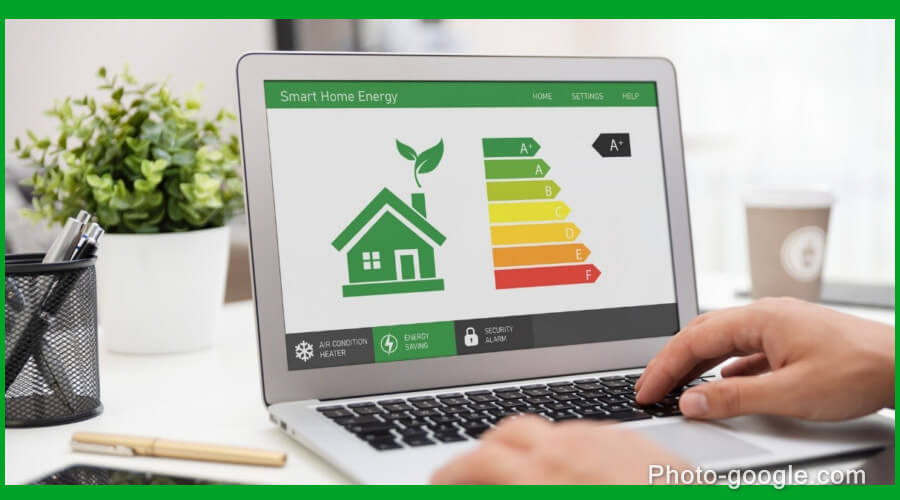Your home’s energy bill can feel like a runaway train. Every month, it arrives with a number that seems a little higher than the last. You feel powerless against rising utility costs.
But what if you could take back control?
Making smart, energy-efficient upgrades to your home is one of the wisest financial decisions you can make. These are not just expenses; they are investments. They are improvements that actively pay you back over time through lower monthly bills.
This guide will focus on the 5 home upgrades that offer the best return on investment (ROI). These are the changes that will make your home more comfortable, increase its value, and put real money back in your pocket in 2025.
1. A Smart Thermostat: The Brains of Your HVAC System
The Upgrade: Replacing your old manual or programmable thermostat with a modern smart thermostat.
Why It Pays for Itself: A smart thermostat learns your family’s schedule and habits. It automatically lowers the temperature when you are away and adjusts it for optimal comfort when you are home. It eliminates the human error of forgetting to turn down the heat or AC. This simple change can reduce your heating and cooling costs by 10-15% per year.
ROI Timeline: 1-2 years.
With a relatively low upfront cost (typically 150−250), a smart thermostat is the fastest-paying energy upgrade you can make. It is the perfect entry point into a more efficient home.
Top Picks: The Google Nest Learning Thermostat and the ecobee Smart Thermostat are the two clear leaders in this space.
2. Sealing Air Leaks and Adding Insulation
The Upgrade: Professionally sealing air leaks around windows, doors, and pipes, and adding insulation to your attic.
Why It Pays for Itself: Think of your uninsulated attic as a giant hole in your home’s roof. In the winter, all your expensive heated air escapes through it. In the summer, the sun’s heat radiates down into your living space, making your AC work overtime. Proper insulation acts as a thermal blanket, keeping your conditioned air inside where it belongs. The U.S. Department of Energy estimates this can save you up to 20% on your energy bills. For more information, you can check their official Energy Saver website.
ROI Timeline: 2-5 years.
This project offers one of the highest returns on investment in all of home improvement. It is a fundamental fix that makes every other part of your home more efficient.
3. Upgrading to a Heat Pump
The Upgrade: Replacing your separate furnace and air conditioner with a single, highly efficient heat pump system.
Why It Pays for Itself: A heat pump is a marvel of modern engineering. In the summer, it works like a normal air conditioner, moving heat from inside your home to the outside. In the winter, it reverses this process. It actually extracts heat from the cold outside air and moves it inside. This is dramatically more efficient than a furnace, which has to create heat by burning fuel. Modern cold-climate heat pumps are effective even in freezing temperatures.
ROI Timeline: 5-10 years.
While the upfront cost is higher, the long-term savings are massive. You are essentially getting a super-efficient heater and air conditioner in one unit. Many governments also offer significant tax credits and rebates for installing heat pumps, which can drastically shorten the payback period.
4. Installing a Heat Pump Water Heater
The Upgrade: Replacing your old electric tank water heater with a hybrid heat pump water heater.
Why It Pays for Itself: Heating water is typically the second-largest energy expense in a home. A traditional water heater works like a giant tea kettle, using heating elements to heat the water directly. A heat pump water heater works like a refrigerator in reverse. It pulls heat from the surrounding air and transfers it to the water in the tank. This process uses up to 60% less electricity than a standard model.
ROI Timeline: 3-6 years.
This is one of the most underrated home upgrades. The energy savings are substantial and consistent, making it a very smart financial move. This is a key part of building a truly sustainable home.
5. Replacing Old Windows
The Upgrade: Replacing old, single-pane windows with modern, double-pane, energy-efficient models.
Why It Pays for Itself: Your windows are a major source of energy loss. Old windows let heat escape in the winter and radiate heat inside in the summer. Modern double-pane windows have an insulating layer of gas (like argon) between the panes and special low-emissivity (Low-E) coatings. These features act as a barrier, reflecting heat back to its source. This keeps your home warmer in the winter and cooler in the summer.
ROI Timeline: 10-15+ years.
This is the longest-term investment on our list, but it offers more than just energy savings. New windows also improve your home’s comfort by eliminating drafts, reducing outside noise, and increasing its overall resale value.
Your Path to a Smarter Home
You do not have to tackle all of these projects at once. Start with the upgrades that offer the quickest payback, like a smart thermostat and attic insulation. Then, you can plan for the larger investments over time.
Making energy-efficient upgrades is a powerful way to fight back against rising utility costs. You are not just spending money; you are investing in a more comfortable, valuable, and affordable home for years to come.

Leave a Reply